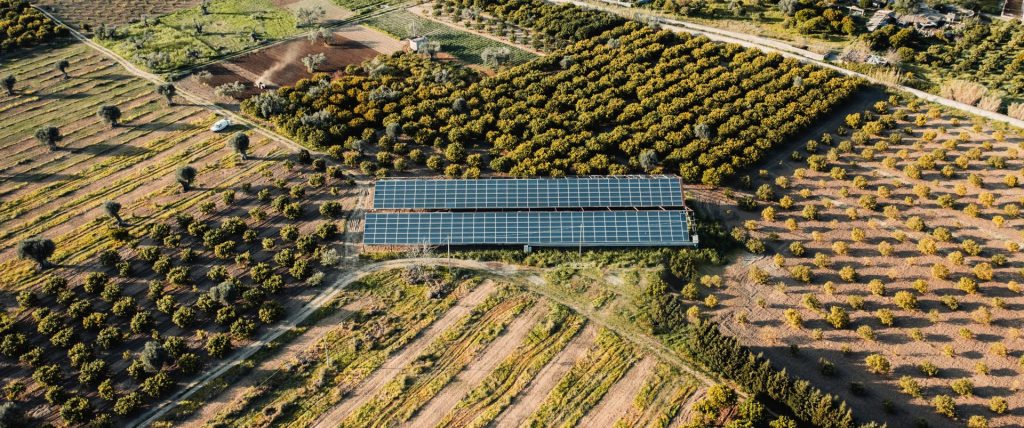13 Things to Consider Before Building Your Own Renewable Energy Software
13 Things to Consider Before Building Your Own Renewable Energy Software
Building your own renewable energy asset management software platform might seem like the smart decision. But, before you go that route, make sure to consider all the things that can make in-house renewable energy software development go from great idea to huge headache.
If you have a team of developers and a history of in-house software development, building your own renewable energy software might seem like the logical decision.
But we often hear from organizations who’ve begun a renewable energy asset management software development project — only to be forced to abandon the work due to scale, complexity, and other unique challenges they encountered along the way.
In addition to the stories we hear from the organizations that end up becoming our customers, we also know from personal experience that renewable energy asset management software must meet many evolving demands. The industry is rapidly changing and growing, with hardware, software, and processes that are still being refined and optimized. Keeping up with all of these changes is a lot to ask of any software team.
Let’s look at some of the factors that can make in-house renewable energy software development difficult — and potentially undeliverable.
1. Software is like an iceberg
Software development can be deceiving. On the surface, the challenge seems doable. You can see that you’re faced with something big, but that’s okay because you have skilled people who know how to handle it.

But, as work begins, the true scale of the problem is revealed. After six months of development, you discover that one component of your IT environment is incompatible with your new application.
After another three months slide past, your team reports that a key feature requires code expertise that they don’t have. And that’s just the tip of the iceberg.
2. Architects hold the keys
On any software project, there are usually one or two people who know the entire application inside and out. To mitigate this risk, tech companies take steps to institutionalize this knowledge and incentivize key people to stay with the company long-term.
But, incentives or no, jobs are no longer lifelong positions and people change jobs more frequently than they did in the past. While this is inevitable, it can be dangerous for software teams that rely on a few key people who own the application. One departure can leave you with a crushing technical debt — and more delays.
3. A long road to market
Developing renewable energy software is likely to take 12–24 months depending on how many developers you have available to dedicate to the project. With testing and bug-fixing, it could be years before you have functional software to manage your renewable fleet. Few companies can wait this long for a solution to be fully operational — and that’s assuming it ever is.

4. Lost in translation
Your in-house team of developers might be ready and willing to build your solution, but there’s still a risk that what you want is not what you’ll get.
Even with stringent processes, clear specifications, and the most detailed of requirements, what you asked for can be lost in translation. Then, after months of development, you discover that a key feature is missing and hundreds of hours have been spent building a solution for the wrong problem.
Choosing a third-party solution helps with the “known-quantity” factor: The features are already built and the capabilities are well-defined. You can evaluate the software on its actual — rather than theoretical — merits, knowing the full extent of its current feature list.
5. An expensive detour
For non-software companies, developing a new application could end up being an expensive distraction. Software projects can take entire teams many months of effort — and the result might be ineffective, bug-ridden, and expensive to maintain.
Consider: While the new software is being developed, which other tasks and upgrades are your developers being forced to put off?
6. Inflexible solutions
In-house software seems to offer greater potential for customization. In theory, this sounds right: If you build your own software, you can build it any way you like. You can build all the features that your stakeholders demand. You can build the perfect solution for your organization.
The reality usually looks more like this:
You give your developers a list of requirements and they start work on planning the build. After two months they report that some of your requirements are unachievable within your timeframe.
You proceed with a simpler approach, missing out on some of the core functionality. After another 18 months and many technical hiccups, the software is ready to use. It functions, but it resets itself every time the wind picks up. Your developers are frantically working on a fix.
In the meantime, you discover that your competitors are producing more energy from a smaller fleet and that they achieve greater efficiency by having a clearer picture of their performance. You ask your developers to add this functionality, but they are already struggling to maintain the core application. You try to hire additional resources but the only people who respond to your job ads have either the software expertise or the industry experience — never both.

There are no guarantees that your in-house team will be able to provide the customization you require — or that customization is necessarily better than a robust and proven platform built with industry standards in mind.
7. Data insecurity
In-house software development seems to offer you more control over your data — which in turn suggests security.
The reality is that connecting your software to a variety of wind turbines is surprisingly complex. Every connection between your fleet, your network, and your servers presents vulnerabilities. Without the experience of interfacing with renewable energy hardware, you may find that your data ends up vulnerable to hackers and snoopers.
Just last year, renewable energy heavyweights including Vestas and Invenergy fell victim to ransomware attacks; surely others have gone unreported.
Having first-hand control of your data is not always the safest option. Third-party organizations often have more rigid security processes in place that have been tried and tested in the field. You can often find greater protection within the security of the herd.
Want to talk with us about how our software can help you? We’d love to give you a demo.
8. Never-ending development
Once the software is developed and deployed, it will require regular maintenance, upgrades, and bug fixes. Managing your software will never stop, so you must always maintain a team of specialists that can keep the platform working to its full potential.
Make sure before you start that you can commit to maintaining and updating your software long-term.
9. Failed software
Software development is notoriously difficult. The Standish Group reported in November 2021 that only 16.2% of IT projects are successfully completed on time and budget with all the promised functions. Most failed on one or more of those metrics and 31.1% were either abandoned or cancelled.
There is a broad consensus that a significant percentage of software development projects fail. Even governments aren’t immune to the iceberg-like dangers of software development. In the UK, a string of major software projects recently made headlines due to enormous cost overruns and a number of outright cancellations.
10. Closed ecosystem
Your in-house software could be fraught with problems and inaccuracies — but some of its shortcomings may be difficult or impossible to identify without comparing its performance on other deployments.
Third-party software has the advantage of being tried, tested, and improved by other energy producers. In this way, you benefit from the operational experiences of your peers and competitors.
11. Niche developers are hard to find
According to a study by Evans Data Corporation, there were 26.9 million software developers in the world in 2021. That will rise to 27.7 million in 2023 and 28.7 million in 2024.
Of course, you can’t hire any developer to work on your project. You need talented people who are experienced, available, interested in your business, proficient in relevant languages — and who have experience dealing with the unique challenges presented by renewable energy assets.
Once all your boxes are ticked, that original pool of developers shrinks significantly. And it’s unlikely that many of those will be available when you need them.
12. Will it scale?
Developing a solution for 10 wind turbines is quite different to building a platform that can manage 10,000 turbines and 15,000 solar panels in 12 different locations. You could easily invest hundreds of thousands of dollars into building a platform that is not capable of growing with your business.
By contrast, SaaS companies are built to be able to contract and expand their capacity to meet changing demand. This absolves you of the responsibility to forecast demand and manage unexpected fluctuations; the challenge is offloaded to a specialist company.
Relying on a SaaS model to manage your renewable estate means you can face the future without fear. If your fleet grows through expansion or acquisition, you can be ready to manage the additional demand as it happens — without requiring any additional infrastructure or development resources.
13. Will it integrate?
How many third-party solutions will easily or automatically interface with your DIY energy software? The answer is likely very few (or none). The likely outcome is that integrations with your platform will be possible only with additional money and time spent.

Conversely, third-party solutions have already been integrated with different companies’ software and hardware, so they will connect to your core applications and services far more easily and seamlessly.
What will you choose?
Only you know if you feel comfortable taking on these challenges. Of course, we would love you to partner with Power Factors for your asset optimization needs.
But there is more to this analysis than simple self-interest.
We have spent the past decade building software for renewable energy companies. We have worked through countless glitches, bugs, and roadblocks. We have spent days and nights wrestling with intractable issues and incompatible systems in hopes of giving you better tools and more trustworthy information to help you address the world’s growing climate challenges.
We have gone through the growing pains and produced solutions that can manage and optimize large fleets of wind, solar, hydro and energy storage assets. Our solutions have been tested in the most demanding conditions and we have demonstrated their capabilities and resilience.
Of course, whatever route you choose, we hope you are successful. All of us working in renewable energy share the goal of building a more sustainable future.
Want to learn more about how our software can help further your business goals? Let us know! We’d love to give you a demo.
Would you like to meet in person? If you’ll be at Intersolar Europe or ACP Cleanpower, so will we! Set up a meeting with us:
- Intersolar Europe (click here to set up a time)
- ACP Cleanpower (click here to set up a time)
